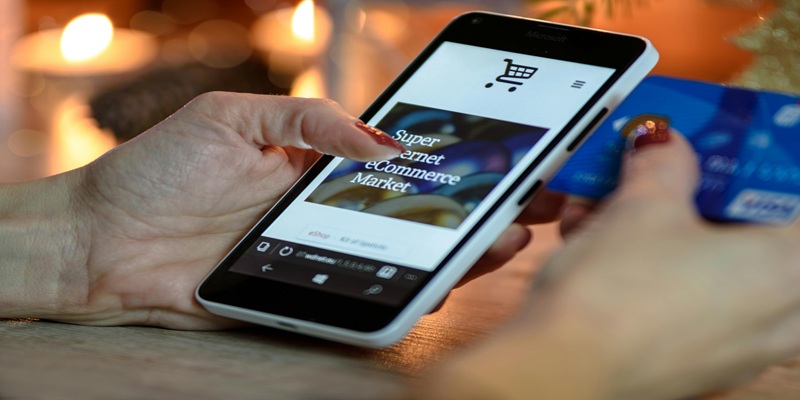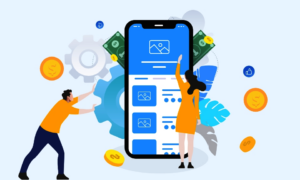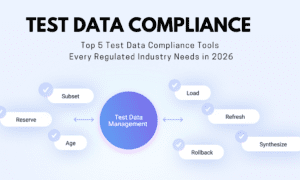Mobile apps have become an integral part of our daily lives. From gaming and entertainment to productivity and fitness, apps cater to a wide range of user needs. However, for app developers and businesses, the challenge lies not just in creating a great app but also in monetizing it effectively. One of the most popular and lucrative monetization strategies is in-app purchases (IAPs). When implemented correctly, in-app purchases can significantly boost revenue while enhancing user experience.
Understanding the Power of In-App Purchases
In-app purchases refer to transactions made within a mobile application, allowing users to buy virtual goods, premium features, or additional content. Unlike one-time app purchases, IAPs provide a recurring revenue stream, making them a favorite among developers. According to recent studies, apps with in-app purchases generate significantly higher revenue compared to those relying solely on ads or upfront payments.
The key to success lies in striking a balance between monetization and user satisfaction. If users feel pressured or overwhelmed by purchase options, they may abandon the app altogether. On the other hand, a well-thought-out IAP strategy can enhance engagement and drive long-term profitability.
Offer Value-Driven Purchases
The foundation of a successful in-app purchase strategy is providing real value to users. Whether it’s unlocking exclusive content, removing ads, or gaining access to premium features, users are more likely to make a purchase if they perceive it as beneficial.
For example, gaming apps often offer power-ups, extra lives, or special characters as in-app purchases. These items enhance the gaming experience, making them irresistible to players. Similarly, productivity apps can offer advanced tools or templates that help users achieve their goals more efficiently.
To maximize revenue, focus on understanding your users’ needs and preferences. Conduct surveys, analyze user behavior, and gather feedback to identify what features or content they value most. By aligning your in-app purchases with user demands, you can increase conversion rates and drive revenue growth.
Implement Tiered Pricing Models
Not all users are willing to spend the same amount of money on in-app purchases. Some may prefer low-cost options, while others are ready to splurge on premium offerings. To cater to a diverse audience, consider implementing tiered pricing models.
For instance, you can offer multiple purchase options at different price points. A basic package could include a few premium features, while a deluxe package might provide access to all premium content. This approach allows users to choose the option that best fits their budget and needs.
Additionally, tiered pricing creates a sense of progression. Users who start with a low-cost purchase may be more inclined to upgrade to a higher tier later on. This not only increases revenue but also fosters long-term user loyalty.
Leverage Limited-Time Offers and Discounts
Scarcity and urgency are powerful psychological triggers that can drive impulse purchases. By introducing limited-time offers and discounts, you can create a sense of urgency that encourages users to act quickly.
For example, you could offer a 50% discount on a premium feature for a limited period or provide exclusive content during a special event. These time-sensitive deals not only boost immediate sales but also create excitement and engagement among users.
However, it’s important to use this strategy sparingly. Overusing limited-time offers can lead to user fatigue and diminish their effectiveness. Reserve these promotions for special occasions or milestones, such as app anniversaries or holiday seasons.
Optimize the Purchase Flow
A seamless and user-friendly purchase flow is crucial for maximizing in-app revenue. If the process is complicated or time-consuming, users may abandon their carts before completing the transaction. To avoid this, focus on optimizing the purchase flow.
Start by simplifying the payment process. Offer multiple payment options, such as credit cards, digital wallets, and carrier billing, to cater to different user preferences. Additionally, ensure that the purchase buttons are prominently displayed and easy to access.
Another effective tactic is to reduce the number of steps required to complete a purchase. For example, instead of redirecting users to an external payment gateway, consider integrating a one-click purchase option within the app. This not only enhances the user experience but also increases the likelihood of conversion.
Use Personalized Recommendations
Personalization is a game-changer when it comes to in-app purchases. By analyzing user behavior and preferences, you can offer personalized recommendations that resonate with individual users.
For instance, if a user frequently plays a specific game level, you could suggest power-ups or hints to help them progress. Similarly, if a user shows interest in a particular feature, you can highlight its benefits and encourage them to make a purchase. Personalized recommendations not only increase the chances of conversion but also enhance user satisfaction. When users feel that the app understands their needs, they are more likely to engage with it and make repeat purchases.
Encourage Social Sharing and Referrals
Social proof is a powerful motivator that can drive in-app purchases. When users see their friends or peers making purchases, they are more likely to follow suit. To leverage this, consider incorporating social sharing and referral programs into your app. For example, you could reward users with in-app currency or exclusive content for sharing their achievements or purchases on social media. Additionally, you can offer referral bonuses to users who invite their friends to download and use the app.
These strategies not only boost revenue but also expand your app’s reach and user base. By turning your users into brand advocates, you can create a self-sustaining cycle of growth and profitability.
Monitor and Analyze Performance
Finally, to maximize revenue from in-app purchases, it’s essential to monitor and analyze performance regularly. Use analytics tools to track key metrics, such as conversion rates, average revenue per user (ARPU), and customer lifetime value (CLV).
By identifying trends and patterns, you can gain valuable insights into what’s working and what’s not. For example, if a particular purchase option is underperforming, you can tweak its pricing or positioning to improve results. Similarly, if a specific user segment is driving the majority of revenue, you can tailor your marketing efforts to target similar users.
Regular analysis allows you to make data-driven decisions and continuously optimize your in-app purchase strategy for maximum profitability.
Conclusion
In-app purchases are a powerful tool for monetizing mobile apps, but their success depends on how well they are implemented. By offering value-driven purchases, implementing tiered pricing models, leveraging limited-time offers, optimizing the purchase flow, using personalized recommendations, encouraging social sharing, and monitoring performance, you can maximize revenue while keeping users engaged and satisfied.
Remember, the key to a successful in-app purchase strategy is striking the right balance between monetization and user experience. When users feel that they are getting real value for their money, they are more likely to make repeat purchases and become loyal customers. So, take the time to understand your audience, experiment with different strategies, and continuously refine your approach to unlock the full potential of in-app purchases.

































